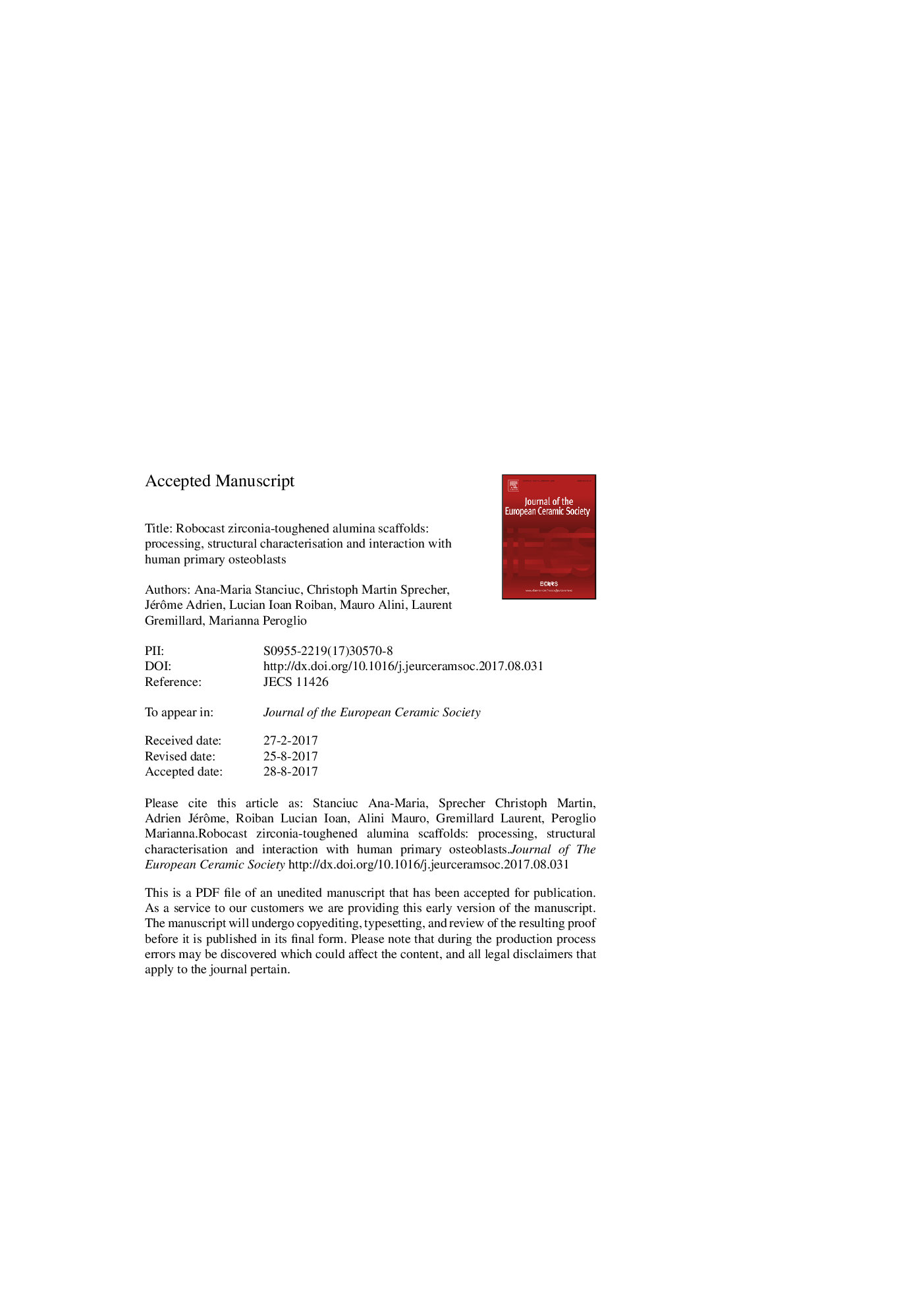| Article ID | Journal | Published Year | Pages | File Type |
|---|---|---|---|---|
| 7898510 | Journal of the European Ceramic Society | 2018 | 24 Pages |
Abstract
Zirconia-toughened alumina (ZTA) is the gold-standard ceramic in hip arthroplasty, but still lacks direct osseointegration and a metal shell, often coated with a bioactive layer, is currently required. The latter could potentially be replaced by a thinner, architectured ZTA layer, thereby allowing for larger acetabular components, with larger range of motion and lower dislocation risk. Robocasting may be an adequate technique to fabricate the architectured layer. Therefore, as a first step, this study aimed to produce ZTA scaffolds (3D-ZTA) by robocasting and assess their in vitro response. Shape retention was achieved by using a stable, well-dispersed, high solid loading ink injected in acid pH waterbath. 3D-ZTA exhibit regularly spaced microporous, rough struts and fully interconnected macroporosity. Human primary osteoblasts were homogenously distributed inside 3D-ZTA and showed increased osteogenic marker expression compared to 2D-ZTA control. Further work will focus on optimizing scaffold design to improve cell retention and extracellular matrix maturation.
Related Topics
Physical Sciences and Engineering
Materials Science
Ceramics and Composites
Authors
Ana-Maria Stanciuc, Christoph Martin Sprecher, Jérôme Adrien, Lucian Ioan Roiban, Mauro Alini, Laurent Gremillard, Marianna Peroglio,
